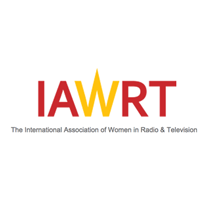KABUL (Pajhwok): Women’s representation in the media sector of Afghanistan has become drastically lopsided following the Islamic Emirate’s takeover in August 2021, find two independent surveys.
The Association of Women in Radio and Television conducted the surveys for gathering information on personal safety, challenges in reporting, level of involvement in media activities and overall changes experienced by women journalists since August 2021.
The issue of women’s representation in top management and decision-making positions should be addressed immediately, the association demanded.
Afghan journalists, especially women, faced a dire situation, the studies found, noting increasing restrictions on the free press.
“Female journalists have been forced to flee or quit their jobs. Many of those still in the country are hiding or working in fear …”
As a result of flagrant interference by the new rulers, the surveys said, a large number of women journalists were finding it impossible to continue working.
In survey recommendations, the association said:
- The UN should ensure support for Afghan journalists as part of their ‘stay and deliver’ agenda for humanitarian assistance and protection in Afghanistan.
- The international community should provide Afghan news organisations immediate support for news-gathering and other operations.
- The international community should create emergency funding for Afghan journalists and media workers who have left the country, as well as those who remain in Afghanistan.
- The de facto authorities must immediately cease harassing and attacking journalists for their work, allow women journalists to broadcast the news and permit the media to operate independently…
- A fundamental red line should be Taliban’s treatment of women journalists and respect for their rights to liberty, freedom of movement, education and employment…
- International institutions have a duty to safeguard respect for the International Covenant on Civil and Political Rights, which Afghanistan jas ratified; and to ensure that journalism can be sustained in Afghanistan.
- We ask the word and those to defend the future of Afghan journalism. We recommend a nation-wide multimedia campaign for press freedom in Afghanistan for the preservation of the gains of the past 20 years, including media independence, pluralism and the protection of journalists…
- The international community should convince the de facto authorities to abide by their public commitment to allow a free and independent media at a time when Afghanistan’s people desperately need accurate news and information.
- The international community must protect the knowledge and rights of Afghan women journalist, as we are looking to ensure the survival of independent media.
- It is important to preserve the autonomy of organizations like Afghan Journalists Safety Committee (AJSC) and Committee to Protect Afghan Women Journalists (CPAWJ), which are operating without support from the now-defunct government.
- The US, European Union and other donors should urge the Taliban to take necessary steps to protect journalists and media organisations and fully implement the Access to Information and Mass Media Law.
- The IEA should carry out effective, impartial and transparent investigations into attacks on journalists and media outlets and prosecute those responsible.
The first survey was concluded with few unachieved deliverables in November 2021. The second was aimed at designing, delivering and complementing the goals and planned deliverables of the first 0ne and aiming at completion of the unfinished work.
The second survey was undertaken from January 2022 onwards and was completed in June 2022.
Both phases of the survey were technically and financially supported by INTERNEWS International/USAID and implemented by the IWART-Afghanistan team.
It covered Kabul, Badakhshan, Balkh, Bamyan, Faryab, Herat, Kandahar, Kunduz, Nangarhar and Paktia provinces.
mud
Views: 116









GET IN TOUCH
NEWSLETTER
SUGGEST A STORY
PAJHWOK MOBILE APP